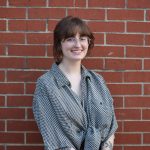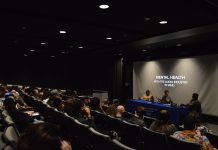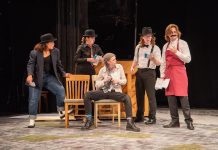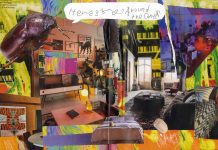Senior John Wallis credits some of his comfortability with coming out to Webster. Yet, he wants to see Webster continue to have tough conversations with its students in order to make the campus even better.
From Congress to the classroom, LGBTQ+ voices demand to be heard. Webster University is home to students of all kinds, many of them as members of the LGBTQ+ community. For students like John Wallis, Webster is a safe place to exist without fear.
Wallis is a senior speech communications and history major. His roles on campus include president of the Forensics and Debate Team, treasurer of Speech and Debate Club and outgoing treasurer of the Webster University College Democrats. Beyond all of these roles, Wallis is a lifelong member of the LGBTQ+ community.
“I first came out as bisexual during my sophomore year and was immediately accepted, no questions asked,” Wallis said. “I [presently] identify as a gay man within the LGBTQ+ community.”

Wallis came out as a gay man recently and feels Webster contributed to him feeling safe enough to be himself. Photo contributed by Shiloh Johnston.
Wallis credits some of his comfortability with coming out to the welcoming atmosphere at Webster.
“Compared to other campuses, I absolutely believe Webster is a good campus for LGBTQ+ people, though there is always room for improvement,” Wallis said. “There are universities within the state of Missouri and across the country who actively seek to deny education to LGBTQ+ students, so Webster is already ahead of the game there. I am proud to be a part of a campus community where I can express my sexuality without fear of repercussion, and that has made all the difference to me. “
This warm sentiment is shared by sophomore legal studies major Katie Barajas. She identifies as a bisexual, cis-gendered female. Although her time at Webster has been short, she feels more than comfortable being vocal about her sexuality on campus.
“LGBTQ+ voices are so important on any and all college campuses for the inclusivity of all groups of people,” Barajas said. “I am still finding a way to use my voice outside of my group involvement on campus.”
While Barajas is still finding her voice in the world, student “Aphrodite B” knows exactly where to start. The name “B” will be used for personal safety for the remainder of the story. B is a gay, trans-femme, non-binary student at Webster. They are a sophomore at Webster and have many opinions about their experience as an LGBTQ+ person at the university.
“There have been times where I have felt included, nourished and respected as a queer person,” B said. “There have also been times where I’ve felt incredibly frustrated and let down by the university.”
Like Wallis said previously, the university is on the path to success, but there will always be room for improvement. B mentions that some of the issues with being an LGBTQ+ person in an educational setting involves being heard. They feel that underrepresented voices are too often talked over or ignored.
“Creating a safe community requires constant conversation and open discussion, and more often than not, that conversation has to be started by the marginalized groups themselves,” B said. “I do not pretend that I speak for all queer people, and I certainly do not speak for Black and brown people, but I hope that in my dogged pursuit of a safe and nourishing space for queer people, others who are more inclined to keep their experiences to themselves are encouraged to speak out.”
B lists some of the people who have helped them start these types of conversations. They mention people like Vincent Flewellen, Webster’s chief diversity officer. They said that while conversations are becoming harder due to COVID-19, there are still people on campus encouraging students to be vocal about their experiences.
“It should not be on the part of queer students to initiate that conversation. The university is responsible for creating a platform that encourages that dialogue and reaches out and engages with queer students and staff,” B said. “Webster University has a large and thriving community of queer students that I am so grateful and happy to be a part of.”
Share this post
Abby Frye (she/her) was the managing editor (Spring 2022) and lifestyle editor (Fall 2020) for The Journal.




